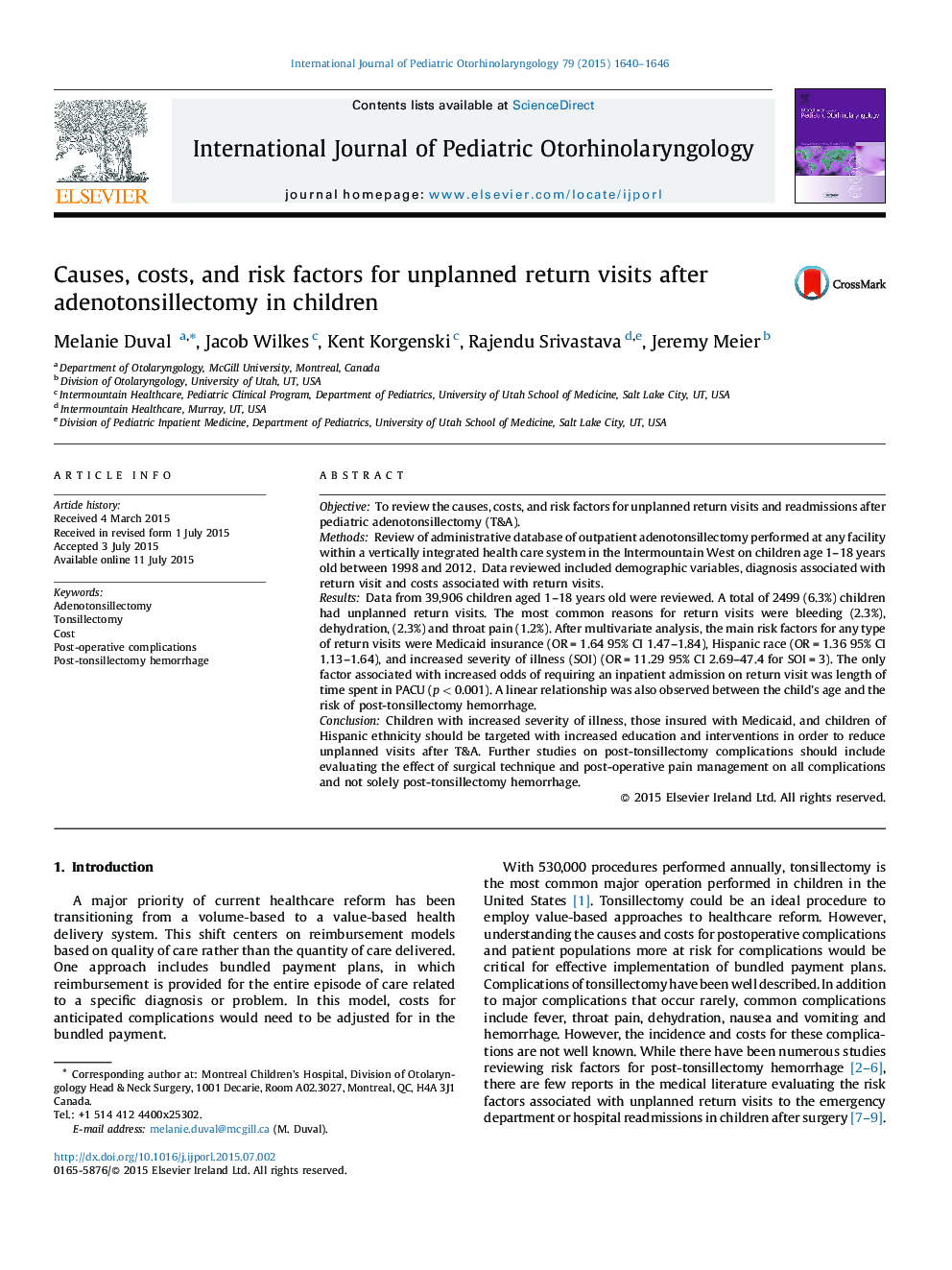| Article ID | Journal | Published Year | Pages | File Type |
|---|---|---|---|---|
| 4111921 | International Journal of Pediatric Otorhinolaryngology | 2015 | 7 Pages |
ObjectiveTo review the causes, costs, and risk factors for unplanned return visits and readmissions after pediatric adenotonsillectomy (T&A).MethodsReview of administrative database of outpatient adenotonsillectomy performed at any facility within a vertically integrated health care system in the Intermountain West on children age 1–18 years old between 1998 and 2012. Data reviewed included demographic variables, diagnosis associated with return visit and costs associated with return visits.ResultsData from 39,906 children aged 1–18 years old were reviewed. A total of 2499 (6.3%) children had unplanned return visits. The most common reasons for return visits were bleeding (2.3%), dehydration, (2.3%) and throat pain (1.2%). After multivariate analysis, the main risk factors for any type of return visits were Medicaid insurance (OR = 1.64 95% CI 1.47–1.84), Hispanic race (OR = 1.36 95% CI 1.13–1.64), and increased severity of illness (SOI) (OR = 11.29 95% CI 2.69–47.4 for SOI = 3). The only factor associated with increased odds of requiring an inpatient admission on return visit was length of time spent in PACU (p < 0.001). A linear relationship was also observed between the child's age and the risk of post-tonsillectomy hemorrhage.ConclusionChildren with increased severity of illness, those insured with Medicaid, and children of Hispanic ethnicity should be targeted with increased education and interventions in order to reduce unplanned visits after T&A. Further studies on post-tonsillectomy complications should include evaluating the effect of surgical technique and post-operative pain management on all complications and not solely post-tonsillectomy hemorrhage.
